Papers by Kristoffer Neville
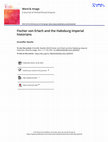
Word & Image, 2023
The Entwurff einer historischen Architectur (Outline of an Historical Architecture, 1721), by Joh... more The Entwurff einer historischen Architectur (Outline of an Historical Architecture, 1721), by Johann Bernhard Fischer von Erlach, the architect to the Austrian imperial court, is often seen as a milestone in the literature of architecture, and as the first comparative and universal history of architecture. In part because scholars have studied it primarily as a work of architectural history, rather than imperial history, it has become relatively unmoored from a large body of earlier and contemporary histories of the Habsburgs and the imperial house. These histories cumulatively established a distinct historiographical tradition that informs the content and narrative of Fischer’s book and aligns it closely with a deeply ideological narrative in which an historical line leads directly from the Old Testament patriarchs through Greco-Roman rulers to the Holy Roman Emperors, and thus from Jerusalem and Rome to modern Vienna. To a substantial degree, this historiography determined what material should be included, what should be excluded, and how the contents should be presented. These choices, based on longstanding convention, have often seemed odd, and even inexplicable, to architectural historians expecting something closer to the modern narrative of the history of architecture. They are, however, entirely consistent with the intellectual and ideological milieu in which the work was produced.
Beyond the Battlefield. Reconsidering Warfare in Early Modern Europe, 2023
Statusfragen: Neue Forschungen zu Herrscherinnen der Frühen Neuzeit in intersektionaler Perspektive / Rank Matters: New Research on Female Rulers in the Early Modern Era, 2023
La Revue de la BNU , 2022
Palladio, Vignola & Co. in Translation. Die Interpretation kunsttheoretischer Texte und Illustrationen in Übersetzungen der Frühen Neuzeit, 2020
Romanesque Renaissance, 2021
Der Mecklenburgische Planschatz. Architekturzeichnungen des 18. Jahrhunderts aus der ehemaligen Plansammlung der Herzöge von Mecklenburg-Schwerin, 2020
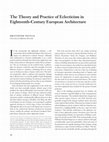
Journal of the Society of Architectural Historians, 2020
This article links an early modern method of eclectic thought to contemporary architectural theor... more This article links an early modern method of eclectic thought to contemporary architectural theory and practice. The eclectic mode promoted the selection and combination of elements from different traditions to create new work, work ostensibly more perfect than the individual sources on which it was based. A related approach has long been acknowledged in major projects by the architects Johann Bernhard Fischer von Erlach, Nicodemus Tessin the Younger, and Balthasar Neumann, all active in the first half of the eighteenth century, but a conceptual basis for this commonality has not been recognized. This article excavates the intellectual foundations of seventeenth- and eighteenth-century eclecticism and shows how these were absorbed into architectural theory, articulating a concept that was widely valued in the German lands during the eighteenth century.
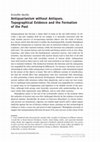
Boreas Rising: Antiquarianism and National Narratives in 17th- and 18th-Century Scandinavia, 2019
Antiquarianism has become am ajor field of study in the last half-century.T od escribe ab ig and ... more Antiquarianism has become am ajor field of study in the last half-century.T od escribe ab ig and complex field far too simply,i ti sb asically concerned with the earlym odernp ractice of incorporating material objectsi nto the studyo fh istory. In aclassic article that did much to define the developing field,Arnaldo Momigliano defined the antiquarian as someone who usesashistoricalevidence coins,ruins, inscriptions, and other material remains, while the historian was primarilyc oncerned with texts.¹ Forancienthistory,texts by Greek and Romanwriters such as Livy,Pliny, Suetonius,a nd others were the fundamental, canonicals ources, and could not be rewritten. Anyh istorian concerned with ancient history had to deal first of all with these sources, and then with secondary sources of various kinds. Antiquarians werewell-versed in these texts as well, but wereinclined to see them as complementary to material evidence. This distinction between the historian and the antiquarian was magnified by other methodological differences. Forinstance, historians wrote in chronological order,while antiquarians wrote in systematic order determined largely by the natureo ft he objectsa th and. This led to different systems of classification, but had the overall effect that antiquarians were less concerned with chronology, or with presentingalinear historical development.H istorians tendedt or ead their ancient authors with reverencer ather than skepticism, and so weren ot very receptive to challenges from material evidence. This attitude was magnified by atendency to regard ruins as too fragmentary and imperfect to be reliable records of the past. Thus, although both groups wereb asicallyc oncerned with understanding the ancient world, their approaches were different,a nd so weret heir concerns.
The Quest for an Appropriate Past in Literature, Art and Architecture, 2018
Artibus et Historiae, 2018
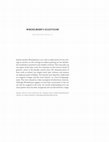
Source: Notes in the History of Art, 2018
Winckelmann (1717–68) is widely known for his writings on ancient art. His writings on modern pai... more Winckelmann (1717–68) is widely known for his writings on ancient art. His writings on modern painting are less familiar, but nonetheless essential to early modern criticism. This essay takes up one aspect of the latter work: his comments on the Carracci family of painters, active in the decades around 1600. His characterization of their work as eclectic has shaped much later criticism and remains an important point of debate. His remarks have long been understood as a negative critique, and the word " eclectic " as a term of disparagement. This view is based on a later conception of eclecticism, however. Although Winckelmann appears to have been inconsistent in the values that he assigned to the term, his overall understanding of it was more positive than has been recognized and was derived from a larger eighteenth-century discourse of eclecticism that was later subverted into a negative concept.
Queen Hedwig Hedwig Eleonora and the Arts. Court Culture in Seventeenth-Century Northern Europe, 2017
Queen Hedwig Eleonora and the Arts. Court Culture in Seventeenth-Century Northern Europe
Sculpture and the Nordic Region

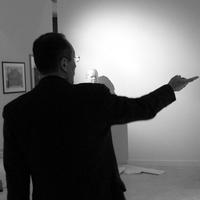


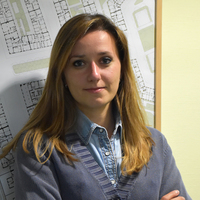
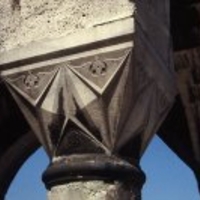


Uploads
Papers by Kristoffer Neville